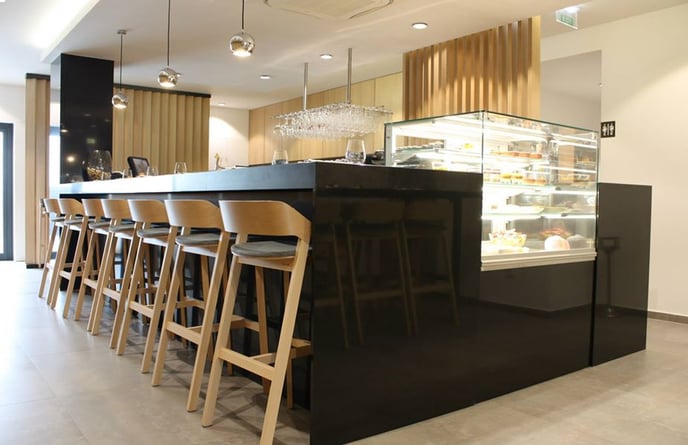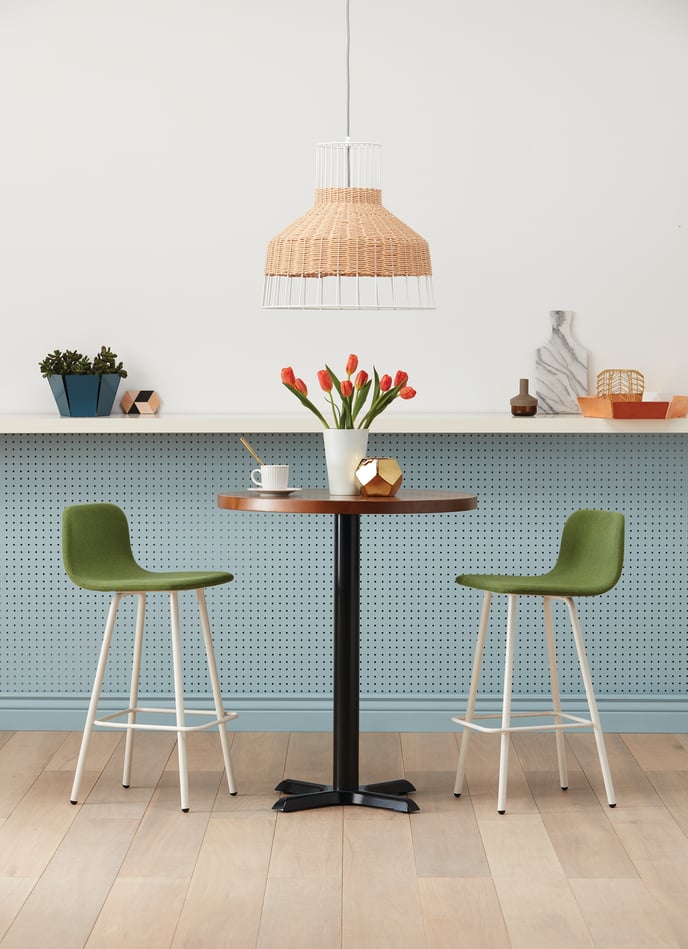Seating is one of the most critical elements of restaurant design, and bar stools are a key component of the spaces where guests will sit and enjoy your tasty appetizers and yummy cocktails. But how do you choose among so many of the unique and interesting options available today?Well, you begin by breaking down the features and functionality of each bar stool type to help guide you right to the perfect barstool option for your unique restaurant. To get started, here’s a breakdown of some of the most important elements to consider during the restaurant barstool selection process:
Get the Height Right
Selecting the right height for your barstools is the most important initial step in the barstool selection process. If you fail to get the right height, you risk unhappy and uncomfortable guests in one of the most profitable areas of your business.There are two more common heights designers usually select from:
- Counter: The perfect size for a 36’’ bar height is the 24-27’’ counter stool. These are typically smaller than traditional barstool options, but create some contrast and visual interest.
- Bar/pub: These are the most commonly found restaurant barstools because they are ideal for a 42’’ bar area. This height option will offer the most variety of designs to choose from.

Spacing
And the measurements continue after you’ve selected the right height, now you must decide how much space you want to have between each stool and between the barstool and the bar surface. In most cases, the preferred height is from 26-30’’ when measuring from the middle of a seat to the middle of the one positioned right next to it. This spacing keeps your guests comfortable and with enough space to eat and socialize. Also, aim for 9-12’’ from the seat of the barstool to the bottom surface of the counter.Durability
Now that you understand the importance of the right size and spacing of your barstools, you should then consider how durable it has to be for your restaurant. It’s important to select finishes that will perform well but also can create cohesiveness with your other design elements for many years to come.
Some of the highest-performing fabrics are vinyls, polyesters, or fabrics with combinations of cotton, polyester, and nylon. These options are the most sought-after because they are easy to clean and resistant to many stains.
But the durability factor also plays into the construction materials you choose. You see a lot of metal and wood barstools in today’s designs because they withstand the test of time and offer the widest variety of options. Wood stools offer the flexibility of using a broad range of stain colors while metal chairs can come in steel or aluminum for a stylish but yet practical option. Steel offers a wealth of options because it can be custom matched to any RAL color, however, wood offers a great warmth with a nice range of tones and stains.

Moveability
And finally, you need to decide if you want your barstools to move or not. Keep in mind when debating this item, swivel barstools may increase your initial cost as well as repair expenses in the future. However, they provide a fun and unique opportunity to create a more social and inviting space for your guests.
And don’t forget to include durable glides on the bottoms of your chairs to provide mobility and protection to floors. And if you want to know more about getting the right glide, check out our Guide to Glides to get everything you need to know!

